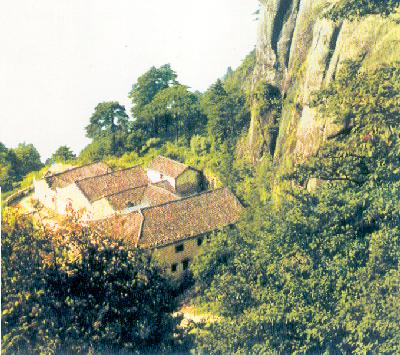Jiuhua Mountain
|
|
|
Buddhist activities |
Jiuhua
Noted not only for its Buddhism relics, but also for its beautiful scenery and favorable climate, the mountain is an ideal summer resort. It′s full of marvelous ridges and peaks, exotic-shaped stones, gushing fountains, flying waterfalls,  and clear streams. There are 99 peaks and 18 scenic spots. The peaks stand sheer against each other, yet they are all exquisitely beautiful, of which Tiantai, Lotus, Tianzhu and Shiwang peaks are the most splendid. There are more than 30 peaks with an elevation of over 1,000 meters, and the highest peak --
and clear streams. There are 99 peaks and 18 scenic spots. The peaks stand sheer against each other, yet they are all exquisitely beautiful, of which Tiantai, Lotus, Tianzhu and Shiwang peaks are the most splendid. There are more than 30 peaks with an elevation of over 1,000 meters, and the highest peak --
There are many interesting stones, which is the source of travelers′ inmagination. The stone in shape of a roc listening to preaching was said to be a roc moved by the preaching and changed into a rock. Guanyin Stone on the
Source: http://www.chinaculture.org